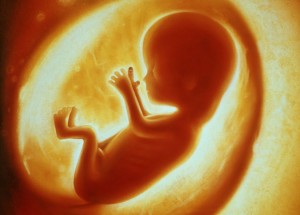Background
“G”, mother of three children and pregnant with a fourth, has a known substance abuse problem. Out of the three children she has already given birth to, two of them have known mental and physical deficits. A lower court had ordered “G” to be committed to a treatment facility for the duration of her pregnancy in the hopes of controlling the substance abuse issue.
The main problem stems from the fact that by commanding “G” to be placed in a facility they have denied her human rights. A higher court overturned this decision and released “G” to continue her pregnancy on her terms, even if it caused harm to the fetus. She ended up giving birth to a baby that did not show any physical or mental ailments.
Dilemma
This case study concerning an unborn child presented in Thomas, Waluchow & Gedge’s Well and Good presents a few ethical dilemmas. One specific dilemma in this case involves how far the law is allowed to go to protect an unborn human. This issue involves the moral principles autonomy and non-maleficence. Each principle has a different effect on one’s decision when regarding a solution to this problem.
Autonomy plays a part in the issue while concerning “G’s” rights. Autonomy is defined as: “Self-rule that is free from both controlling interference by others and from limitations” (Varelius, 2006). I understand this to mean that one has the inherent right to make decisions for themselves without needing to consult others. It is a basic human right. According to the case described, “G’s” autonomy was most definitely violated. However, are there situations in which autonomy should be compromised for the greater good?
Non-maleficence is a major aspect when concerning the protection of “G’s” unborn baby. Non-maleficence states that humans should “avoid needless harm or injury” (Lisa, 2011). According to the previously stated background, “G” is claimed to be a repeat offender of substance abuse. She has already procreated two “harmed” and “injured” children as a result of her addictions. She has already defied the ethical principle of non-maleficence. Should she be given the chance to inflict “harm” and “injury” on yet another child?
Reflection
There are two very big issues and neither have a simple solution. I am an advocate of human rights, but in this case I don’t think it is that simple. “G” made an autonomous and declarative decision to keep her fetus and give birth to a baby. Making that decision not only made her responsible for another life in addition to her own, but also made her accountable to provide the best possible life for her unborn baby. As human beings, “Our existence, individually and corporately, is as dependent upon mutual responsibility as it is upon rights” (Haack, 2009). It is common in our day and age where women’s rights are being strongly advocated for that other co-inhabiting issues are being subdued. “G’s” autonomy is not the only thing at stake here; it is intertwined with her duty to her unborn baby. Acting according to the principle of non-maleficence is a basic aspect of providing an acceptable quality of life for her unborn child. In addition, her autonomy was only temporarily suspended. The court only ordered her to be in a treatment program for the length of her pregnancy. Once she delivered her baby, she could make her own decision about whether she should stay in the facility or not. While it is not ideal, I believe that the best solution to the problem would have been to keep “G” in the treatment program until she gave birth.
Works Cited
Haack, Susan M. “The Rights and Responsibilities of Pregnant Women.”The Rights and Responsibilities of Pregnant Women. Trinity International University, 23 Jan. 2009. Web. 24 Jan. 2015. <https://cbhd.org/content/rights-and-responsibilities-pregnant-women-0>.
Lisa, Sher. “Non-Maleficence and Beneficence.” The EIESL Project RSS. University of British Columbia, 2011. Web. 24 Jan. 2015. <http://ethicsofisl.ubc.ca/?page_id=172>.
Varelius, Jukka. “The Value of Autonomy in Medical Ethics.” Medicine, Health Care, and Philosophy 9.3 (2006): 377–388. PMC. Web. 24 Jan. 2015. <http://www.ncbi.nlm.nih.gov/pmc/articles/PMC2780686/>
Image Sources
http://shark-tank.com/wp-content/uploads/2014/04/Fetus-2.jpg
http://www.icb-builders.com/images/Houston_County_Superior_Courthouse_Interior_Renovation.jpg


I agree with much of what Sadhana has written. This is a really difficult dilemma. I do believe that a woman should have the decision whether or not to have her baby. However it is important to consider that the child’s life may be significantly impaired, as were her other two. It seems that some sort of compromise does need to be made, such as making sure that the mother is getting help and avoiding drugs during her pregnancy, and maybe that the children are checked in on to make sure that they are able to have the best life possible without additional problems due to their mother’s drug problem.
Sadhana,
I agree with you that there is no single correct answer in this specific case. Like many other cases, numerous reasonable courses of action are present in this case. Additionally, I agree with your conclusion, but I would like to elaborate and elucidate on our perceived correct course of action.
With today’s modern technology and the accessibility of contraceptives, conception of a baby is (usually) one’s choice. Since “G” has chosen to become impregnated with another unborn child, the responsibility of caring for the child both during and after the pregnancy falls solely on her. Since past experiences, and ultimately the court, have deemed “G” incapable of caring for the baby’s safety on her own, I believe that “G” should definitely have been kept in the facility for the sake of the baby. The baby did not ask to be conceived or born. For this reason, only the best of care should be provided for the innocent being. In this case, after her pregnancy, “G” can decide to go off and pursue any mischief that she would like, but during the pregnancy, she should be forced to keep both her and her baby safe for the sake of the unborn child’s wellbeing.